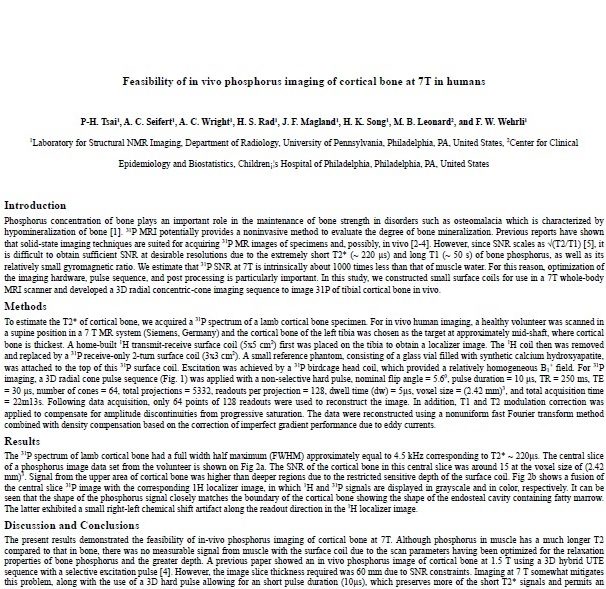Feasibility of in vivo phosphorus imaging of cortical bone at 7T in humans
Abstract
Phosphorus concentration of bone plays an important role in the maintenance of bone strength in disorders such as osteomalacia which is characterized by hypomineralization of bone [1]. 31P MRI potentially provides a noninvasive method to evaluate the degree of bone mineralization. Previous reports have shown that solid-state imaging techniques are suited for acquiring 31P MR images of specimens and, possibly, in vivo [2-4]. However, since SNR scales as √(T2/T1) [5], it is difficult to obtain sufficient SNR at desirable resolutions due to the extremely short T2* (~ 220 µs) and long T1 (~ 50 s) of bone phosphorus, as well as its relatively small gyromagnetic ratio. We estimate that 31P SNR at 7T is intrinsically about 1000 times less than that of muscle water. For this reason, optimization of the imaging hardware, pulse sequence, and post processing is particularly important. In this study, we constructed small surface coils for use in a 7T whole-body MRI scanner and developed a 3D radial concentric-cone imaging sequence to image 31P of tibial cortical bone in vivo.

